For Native Plant Appreciation Week we asked our staff and volunteers to pick a favorite native plant — which is a difficult task! Most of us struggled to pick just one of our favorites because the Pacific Northwest has so many beautiful, charismatic, fun, and important native plants. Scroll below to see some of the favorites we picked, and learn something new about our native plants!
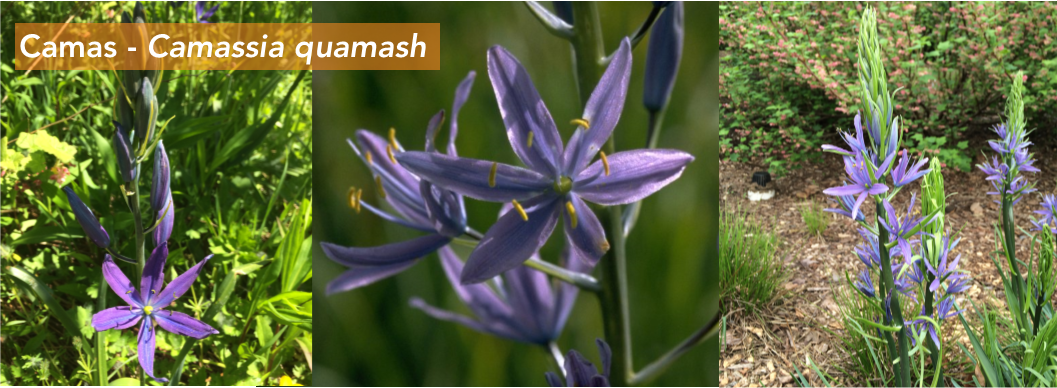
Lisa Cieko – Green Seattle Partnership Plant Ecologist
What is your favorite Washington native plant? Camas (Camassia quamash).
Why is this your favorite native plant? The spikes of blue-purple blooms are stunning and make for happy bees, flies, and beetles.
What is a fun fact about this plant? Camas bulbs are an important staple food for native Northwest peoples, but should not be confused with the aptly named Death Camas (Zigadensus venenosus), which has similar leaves, but is toxic.
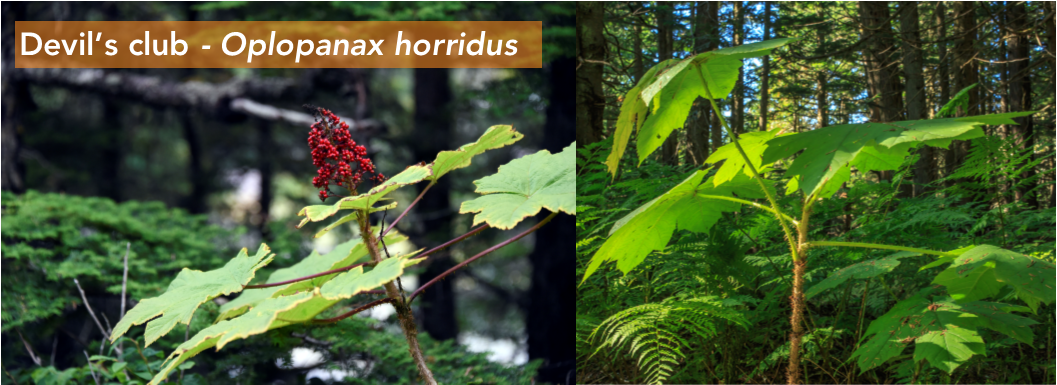
Ali Erskine –Forterra Stewardship Associate
What is your favorite Washington native plant? Devil’s club (Oplopanax horridus)
Why is this your favorite native plant? It’s so tough and yet so beautiful. It has thorns on its leaves- how cool is that?
What is a fun fact about this plant? You can make tea out of the stems! (But I don’t recommend doing it because you have to cut it down.)
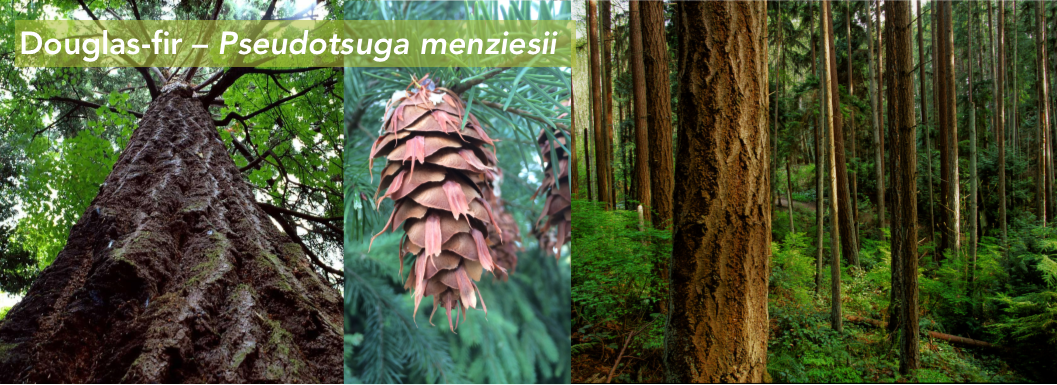
Chris Baines – Seattle Parks and Recreation Natural Areas Crew Lead
What is your favorite Washington native plant? Douglas-fir (Pseudotsuga menziesii)
Why is this your favorite native plant? They are important both alive and dead, providing both food and shelter for many of our Pacific Northwest organisms.
What is a fun fact about this plant? Indigenous legend says during a large fire mice who were unable to escape the flames asked the trees to hide/protect them. They took shelter in the Douglas fir cones and survived; and to this day you can see their back feet and tails sticking out of the cones!
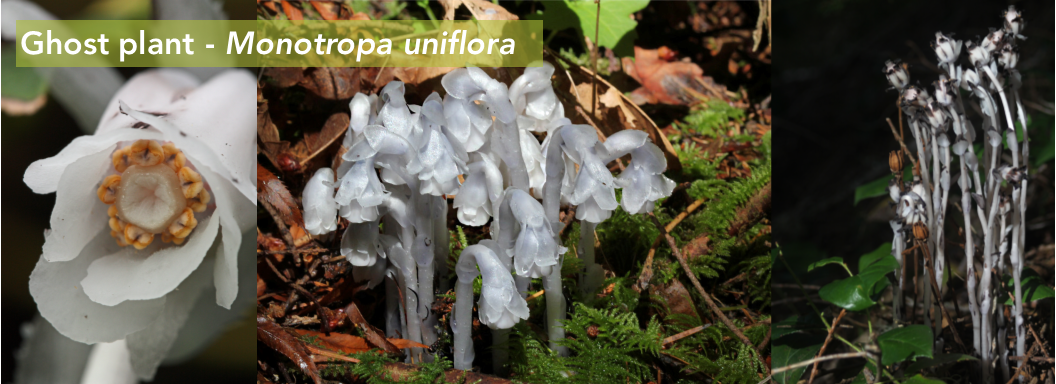
Christine Stephens – Forterra Stewardship Associate
What is your favorite Washington native plant? Ghost plant (Monotropa uniflora)
Why is this your favorite native plant? It’s completely white, and the cross section has a really interesting pattern.
What is a fun fact about this plant? It’s a parasitic plant that gets its energy through mycorrhiza connected to photosynthetic plant roots, which is why it’s white!
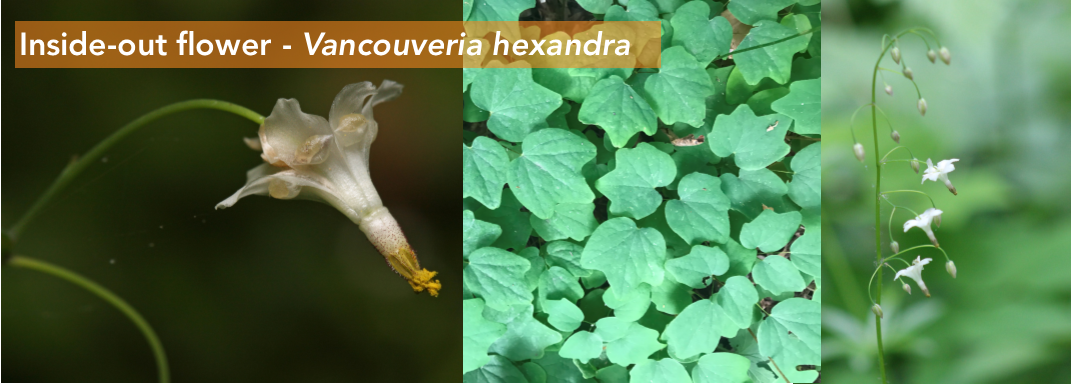
Andrea Mojzak – Green Seattle Partnership Program Manager
What is your favorite Washington native plant? Inside-out flower (Vancouveria hexandra)
Why is this your favorite native plant? I love the leaves, they are a wavy shaped leaf, which is why the plant is sometimes called duck foot plant. I also like how they are arranged on the stem, it make the plant look delicate and fern-like. I’m a total sucker for cool foliage.
What is a fun fact about this plant? The plant is named for the flower, which as the name would suggest looks like it is inside out—the petals fold back on themselves.

Stu Watson – Forterra Lands Manager
What is your favorite Washington native plant? Oregon sunshine (Eriophyllum lanatum)
Why is this your favorite native plant? It’s so bright/sunny/pretty, you can’t not feel good looking at it.
What is a fun fact about this plant? It’s a great pollinator plant for native butterflies, especially the endangered Taylor’s checkerspot.

Alex Selvey – Forterra Riparian Restoration Project Associate
What is your favorite Washington native plant? Oso berry (Oemleria cerasiformis)
Why is this your favorite native plant? It’s one of the first plants to leaf out and bloom, and it’s a sign that Spring is not far behind! It’s also pretty tenacious and a great restoration plant for disturbed sites.
What is a fun fact about this plant? It’s pretty unique- the only plant in its genus!

Eric Sterner – Green Seattle Partnership Plant Ecologist
What is your favorite Washington native plant? Pacific fairy-slipper (Calypso bulbosa var. occidentalis)
Why is this your favorite native plant? I discovered this amazing plant in the woods of Spokane in Eastern Washington where I grew up. They’re so fragile and tiny and so beautiful.
What is a fun fact about this plant? Calypso bulbosa is chlorophyllous but also hemi-mycoheterotrophic; that is, it makes it own food, but also utilizes at least one fungus species to provide some of its carbon intake. The known fungi involved is Thanatephorus ochraceus, a saprotroph.
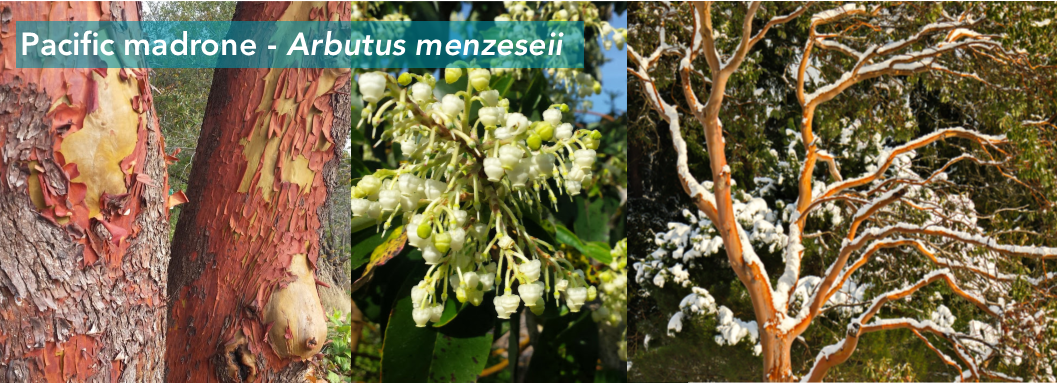
Michael Yadrick – Green Seattle Partnership Plant Ecologist
What is your favorite Washington native plant? Pacific madrone (Arbutus menzeseii)
Why is this your favorite native plant? It is the largest species in the Family Ericaceae and a true Cascadian tree. I love how its unique bark sparkles in the late afternoon sun, and how long the fruit stays on the tree for hungry birds in early winter.
What is a fun fact about this plant? Some people think it will fall over if it’s leaning. The madrone habit isn’t straight like a conifer; it’s multiple trunks will twist and bend towards the sunlight.
Phillip Vogelzang – Green Seattle Partnership Forest Steward
What is your favorite Washington native plant? Pacific madrone (Arbutus menzeseii)
Why is this your favorite native plant? Mainly because it is evolutionarily much older than the conifers and deciduous trees we typically associate with the PNW. It’s actually a tropical hardwood left over from when this area was hot and humid. And I just love the dark red bark that peels to reveal a lime green bark underneath.
What is a fun fact about this plant? The arbutus was considered a sacred tree by the coastal Salish native peoples who never cut them down or injured them in any way. They were very aware of how destructive tsunamis were and the warning signs that went with them including a sudden drop in water level. They knew they only had a short time before the actual tsunami hit. When they saw these warning signs, they knew to immediately tie their longboats (most important source of wealth and power) to an arbutus tree because the taproot went straight down and was much more likely to hold fast during the tsunami than the typical conifers, which had much more superficial root systems.
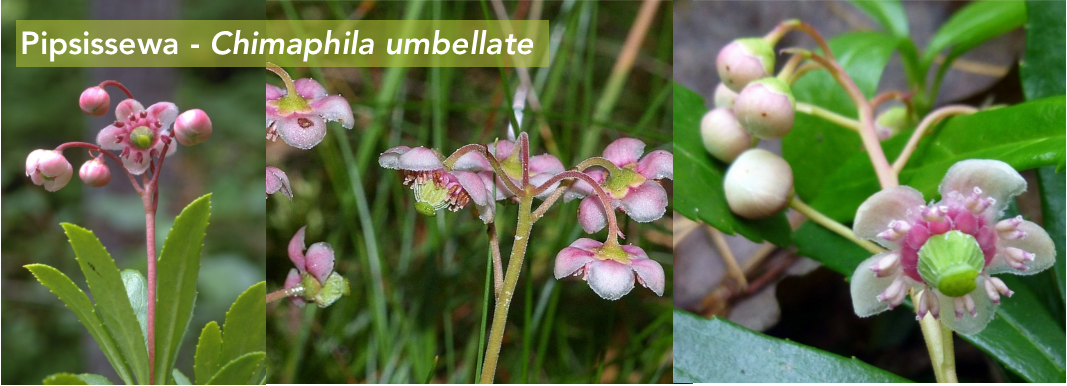
Christine Stephens – Forterra Stewardship Associate
(Yes, we let her do two because this plant is so cool!)
What is your favorite Washington native plant? Pipsissewa (Chimaphila umbellate)
Why is this your favorite native plant? I think it’s really cute!
What is a fun fact about this plant? There are other types of pipsissewa native to other parts of the country, like Chimaphila maculate, native to the eastern US. Pipsissewa is also called little prince’s pine, and is part of the heath family.

Jim Corson – Green Seattle Partnership Forest Steward
What is your favorite Washington native plant? Red-flowering currant (Ribes sanguineum)
Why is this your favorite native plant? It is a beautiful bright spot in early spring and the hummingbirds love the flowers. Later on it provides fruit for local fruit eating birds.
What is a fun fact about this plant? It makes a great plant for your yard!
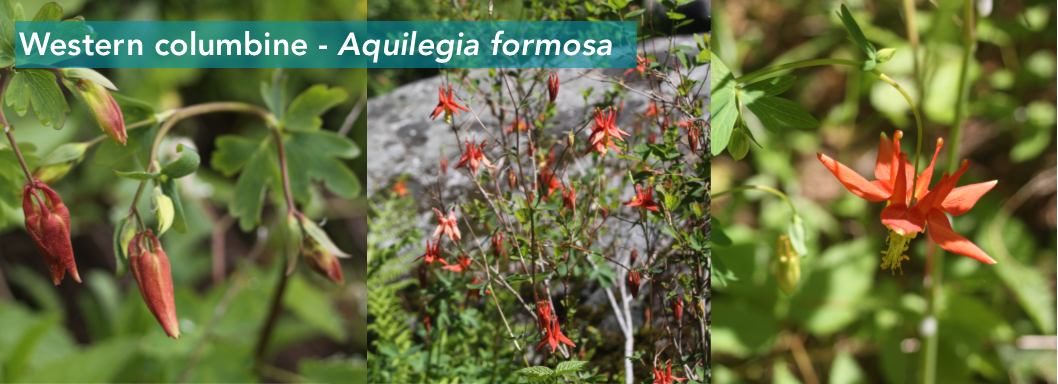
Nicole Marcotte – Green Cities Project Manager
What is your favorite Washington native plant? Western columbine (Aquilegia Formosa)
Why is this your favorite native plant? I’m a sucker for anything with petals, and really for any plant that helps to attract our native pollinators; but with its bold red and yellow colors, its unique upside-down, star-like shape, and its delicate lacey leaves makes western columbine one of my favorites! Whenever I see these bright flowers while out on the trail, I am reminded of my home in Massachusetts, where the similar Aquilegia canadensis thrives. Moving to Seattle from the east coast, and having to learn how to identify a whole new set of native plants was intimidating, but it was comforting to see some familiar “faces” in the forest, including the always beautiful columbine.
What is a fun fact about this plant? The common name of this plant was derived from the Latin columbina meaning “dove-like.” Some say the flower’s petals and spurs resemble a group of doves gathering in a circle. Can you see it?

Maya Klem – Forterra Stewardship Associate
What is your favorite Washington native plant? Western Skunk Cabbage (Lysichiton americanus)
Why is this your favorite native plant? I love wetlands and these are such a fun and quintessential PNW wetland plant. Plus, I think they look unique with their Spathe and Spadix.
What is a fun fact about this plant? Skunk Cabbage is able to produce its own heat at the end of winter and pierce through cold ground, allowing it to be one of the first plants to start leafing out in the Spring.

Ali Yeates – Green Cities Senior Project Manager
What is your favorite Washington native plant? Western White Trillium (Trillium ovatum)
Why is this your favorite native plant? It is growing in our backyard- which makes me feel very connected to the forest and connected to my old home in the Southern Appalachians (where the Eastern subspecies grows). The “wake robin” is one of my favorite reminders that spring has arrived and that sunshine and summer aren’t too far away.
What is a fun fact about this plant? Western Trillium changes color and some scientists (including me) believe this happens once the flower is pollinated to alert pollinators, like bees, to choose another bloom!
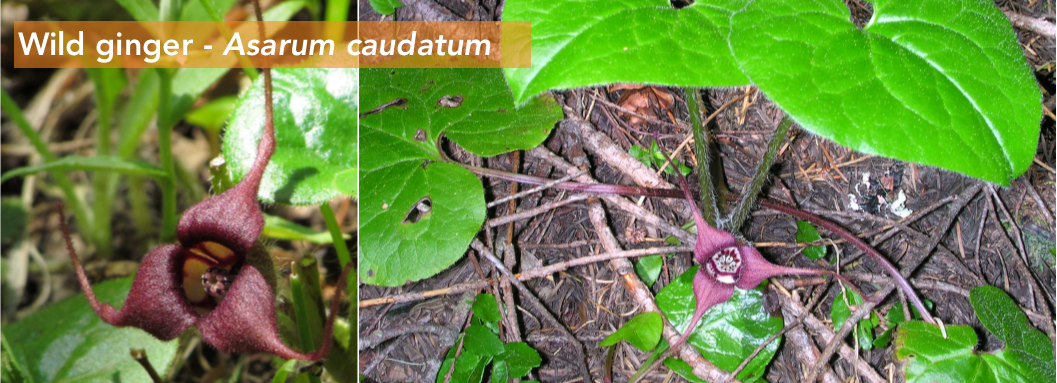
Lucy Weinberg – Green seattle partnership Forest Steward
What is your favorite Washington native plant? Wild ginger (Asarum caudatum)
Why is this your favorite native plant? It is evergreen, it grows in moist shady areas, and it has the most amazing hidden flowers.
What is a fun fact about this plant? It is pollinated by beetles and flies who are attracted to the flower, which has a color similar to rotting flesh, and ants help distribute the seeds.

Maya,
This collection of favorites, with comments and photos, was unusual- it was interesting and clever, and useful for volunteers like the Carkeek Gardeners. The comments about why the plant was a favorite were really memorable.
I sent the link to my group of volunteers and hope the page will be available for some time.
Stunning article Maya! Great photos and loved the fun facts! I will be sharing with various groups. Thank you!